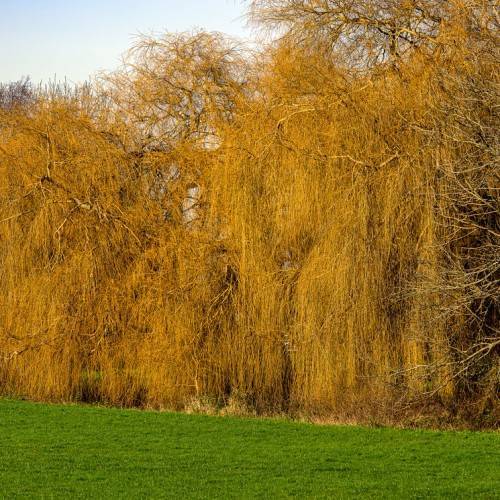
weeping willow
Salix babylonica var. pekinensis 'Pendula'
Cycle:
Perennial
Watering:
Frequent
Hardiness Zone:
6 - 8
Flowers:
Flowers In Spring
Sun:
Filtered shade, Full sun, Part sun/part shade
Fruits:
Fruits In Summer Ready In Fall
Leaf:
Yes
Growth Rate:
High
Maintenance:
Moderate
Invasive:
Yes
watering
Weeping willow needs regular, thorough watering when the soil is slightly dry. This species should be watered once a week in the summer and every 10 to 14 days in the cooler months. Water the willow deeply and evenly at its base to encourage the deepest root development possible. When watering, be sure that the soil is moistened to a depth of 10 inches. After watering, check for moisture at a depth of 1 foot. If it has not fully soaked into the ground by then, water again. When temperatures are warm, the tree may need even more frequent watering.
sunlight
Weeping willows (Salix babylonica var. pekinensis 'Pendula') should be planted in a sunny area, as they require a lot of direct sunlight. Depending on the season, the tree can receive up to 8 hours of direct sunlight every day. During the summer months, it’s best to make sure that the tree receives at least 6 hours of direct sunlight. During the winter months, the tree should receive at least 4 hours of direct sunlight daily. This plant species can also tolerate some partial shade, so it’s a good idea to rotate the tree as the seasons change. This will allow maximum sunlight period for the tree throughout the year.
pruning
For a weeping willow (Salix babylonica var. pekinensis 'Pendula'), pruning is usually best done in late winter or early spring. Prune off dead, damaged, and crossing branches now. For maintenance pruning, after the tree is established, trim off any long branches and thin out the canopy for increased air flow. You can also shorten or maintain the shape of the tree by pruning back long branches. However, pruning should be kept to a minimum and never more than 20-30%.
